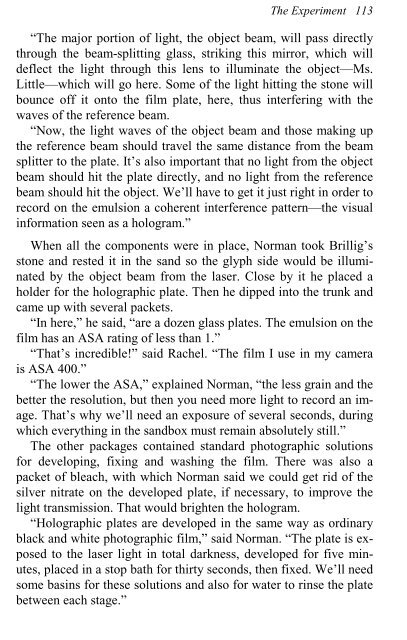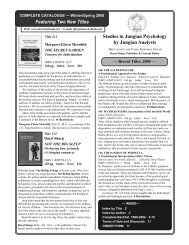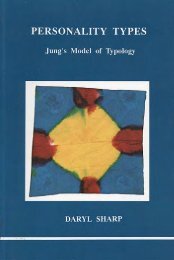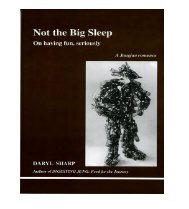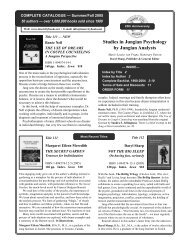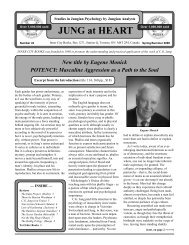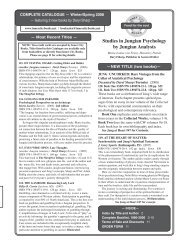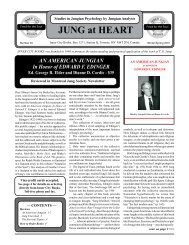Chicken Little: The Inside Story (A Jungian ... - Inner City Books
Chicken Little: The Inside Story (A Jungian ... - Inner City Books
Chicken Little: The Inside Story (A Jungian ... - Inner City Books
You also want an ePaper? Increase the reach of your titles
YUMPU automatically turns print PDFs into web optimized ePapers that Google loves.
<strong>The</strong> Experiment 113<br />
“<strong>The</strong> major portion of light, the object beam, will pass directly<br />
through the beam-splitting glass, striking this mirror, which will<br />
deflect the light through this lens to illuminate the object—Ms.<br />
<strong>Little</strong>—which will go here. Some of the light hitting the stone will<br />
bounce off it onto the film plate, here, thus interfering with the<br />
waves of the reference beam.<br />
“Now, the light waves of the object beam and those making up<br />
the reference beam should travel the same distance from the beam<br />
splitter to the plate. It’s also important that no light from the object<br />
beam should hit the plate directly, and no light from the reference<br />
beam should hit the object. We’ll have to get it just right in order to<br />
record on the emulsion a coherent interference pattern—the visual<br />
information seen as a hologram.”<br />
When all the components were in place, Norman took Brillig’s<br />
stone and rested it in the sand so the glyph side would be illuminated<br />
by the object beam from the laser. Close by it he placed a<br />
holder for the holographic plate. <strong>The</strong>n he dipped into the trunk and<br />
came up with several packets.<br />
“In here,” he said, “are a dozen glass plates. <strong>The</strong> emulsion on the<br />
film has an ASA rating of less than 1.”<br />
“That’s incredible!” said Rachel. “<strong>The</strong> film I use in my camera<br />
is ASA 400.”<br />
“<strong>The</strong> lower the ASA,” explained Norman, “the less grain and the<br />
better the resolution, but then you need more light to record an image.<br />
That’s why we’ll need an exposure of several seconds, during<br />
which everything in the sandbox must remain absolutely still.”<br />
<strong>The</strong> other packages contained standard photographic solutions<br />
for developing, fixing and washing the film. <strong>The</strong>re was also a<br />
packet of bleach, with which Norman said we could get rid of the<br />
silver nitrate on the developed plate, if necessary, to improve the<br />
light transmission. That would brighten the hologram.<br />
“Holographic plates are developed in the same way as ordinary<br />
black and white photographic film,” said Norman. “<strong>The</strong> plate is exposed<br />
to the laser light in total darkness, developed for five minutes,<br />
placed in a stop bath for thirty seconds, then fixed. We’ll need<br />
some basins for these solutions and also for water to rinse the plate<br />
between each stage.”


